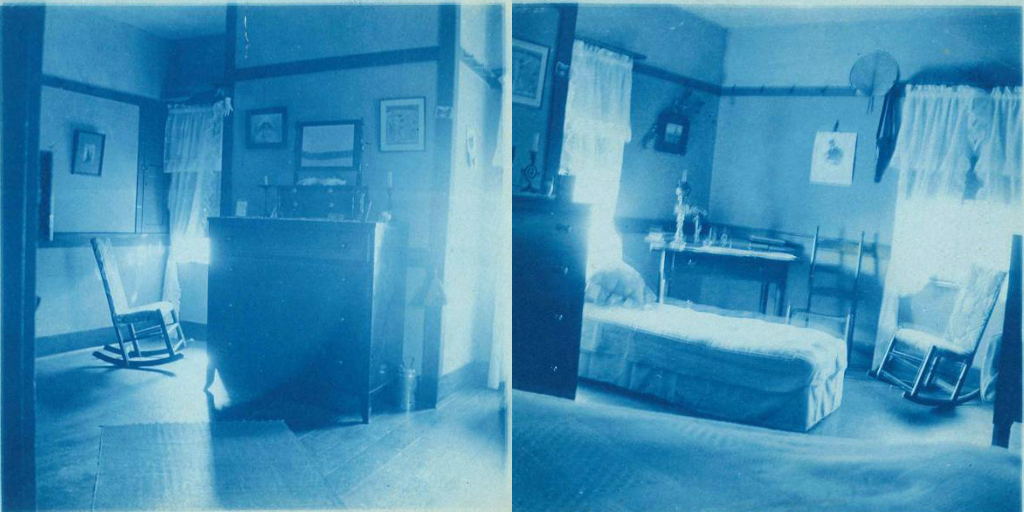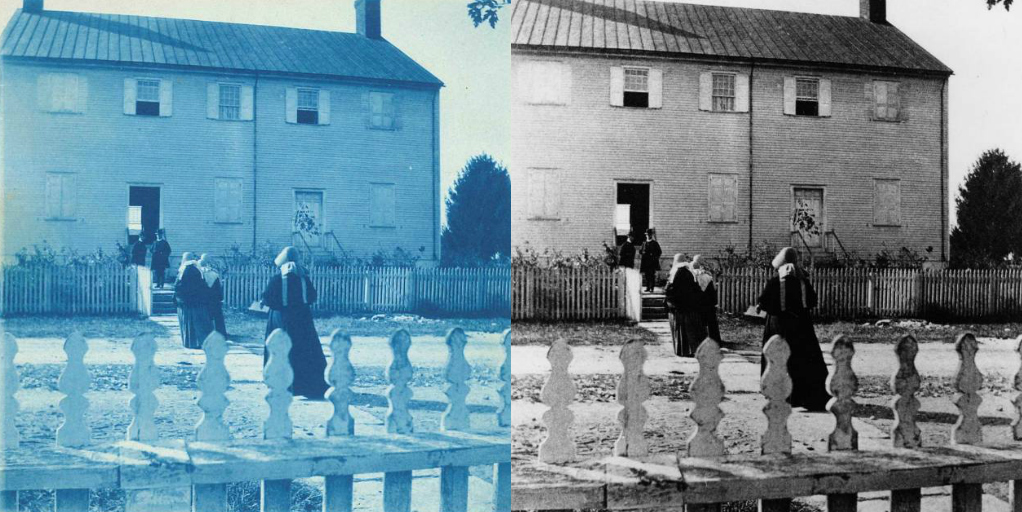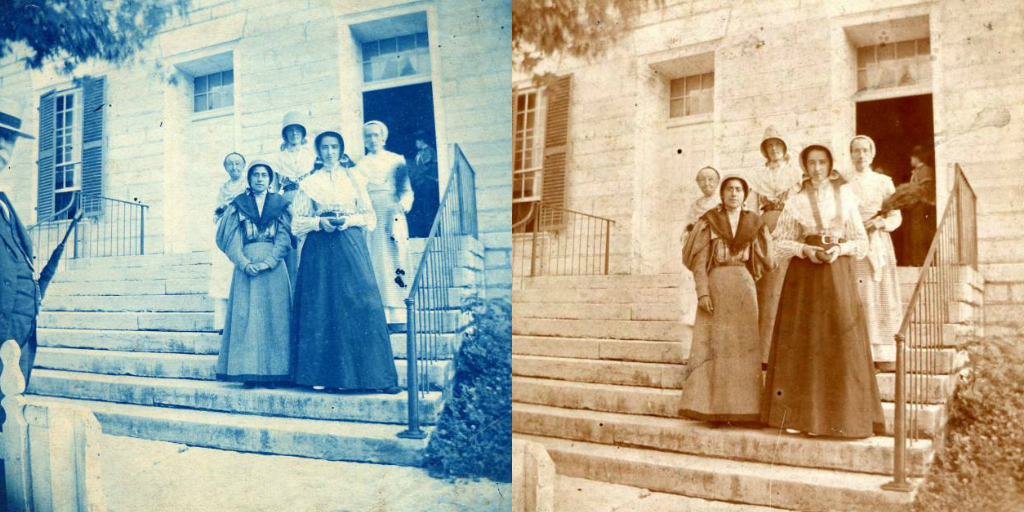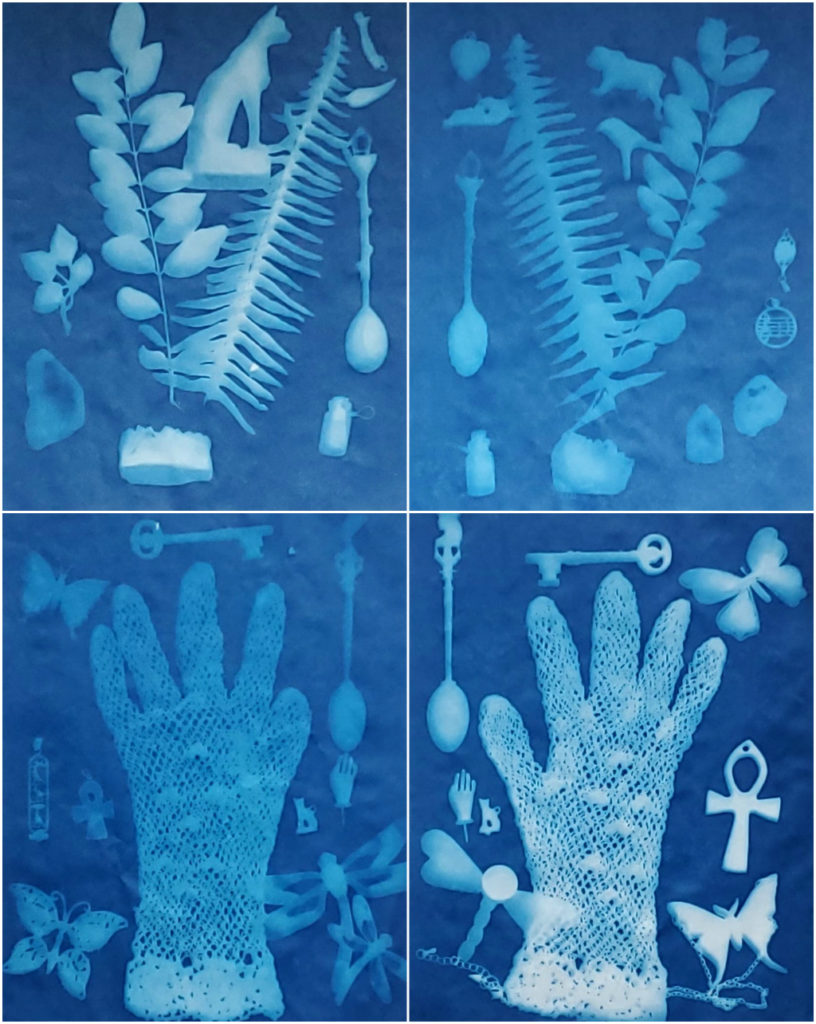Laura Webb, Program Specialist
What does the color combination of blue and white remind you of? Perhaps it is Blue Willow china, Delftware pottery, or shibori indigo-dyed textiles – or, if you’re one of our Central Kentucky neighbors, it’s University of Kentucky sports!

As I have been working our way through the historic photography aspect of our archives and collections, I was thrilled to come across examples of cyanotypes – an early photographic process that results in vivid blue and white prints. If you’re a regular Village@Work reader, you may have spotted one in our previous post about the Pleasant Hill Meeting House!
Cyanotypes are made with oxidized ferrous, i.e. iron, salts – the basis for the original Prussian blue pigment (which, incidentally, was the first modern synthetic pigment). A solution of two types of these salts react with UV light (sunlight!) to develop an image, which can then be rinsed off with clean water, leaving an image positive behind.[1]
The cyanotype process was invented in 1842, and was originally used for reproducing scientific notes (no photocopiers back then!); however, its potential for producing and reproducing images was quickly discovered, and the process was then used for photograms,[2] photographs, technical copies, and fine art. It’s the origin of the term “blueprint” – for decades, technical and architectural drawings were reproduced with the cyanotype process, resulting in blue lines on white paper![3]

Because this process is relatively simple and requires no darkroom, it was used long after it was the favored process of professional photographers – starting in the 1870s, it was used by photographers in the field to create “proofs” of a negative before they would develop it in a darkroom.[4] Several of our cyanotypes seem to have been used for this purpose, as they can be paired with exact (or near-exact) copies made with an albumen or gelatin-silver process. Want to play “spot the difference?”


This process is still favored by many artists, and ferrous salt solutions have been created that can be used on both paper and textiles. Pre-treated “Sunography” paper can also be purchased for a fun and easy photogram experience. I have done this activity myself, with lovely results.

Have you ever tried making a cyanotype, or another type of photogram or print? If so, how did it turn out? How would you use this process – for art, for documentation, or for making copies?
Shaker Village of Pleasant Hill was awarded a CARES grant through The National Endowment for the Humanities in June 2020. Funding from this grant award supported two activities to enhance digital humanities initiatives at SVPH, including Laura Webb’s work to review our collection records and prepare them for publishing in a public digital database.
[1] Rice, Cory. “Historical Processes: The Cyanotype.” B&H Explora (blog). 2019. Accessed October 15, 2020. https://www.bhphotovideo.com/explora/photography/features/historical-processes-the-cyanotype.
[2] Dictionary.com, s.v. “Photogram,” accessed October 15, 2020, https://www.dictionary.com/browse/photogram.
[3] Experiment Station. “What Is a Cyanotype?” The Phillips Collection (blog). May 4, 2012. Accessed October 15, 2020. https://blog.phillipscollection.org/2012/05/04/what-is-a-cyanotype/.
[4] Stulik, Dusan, and Art Kaplan. The atlas of analytical signatures of photographic processes. Los Angeles, CA: The Getty Conservation Institute, 2013. https://www.getty.edu/conservation/publications_resources/pdf_publications/pdf/atlas_cyanotype.pdf.